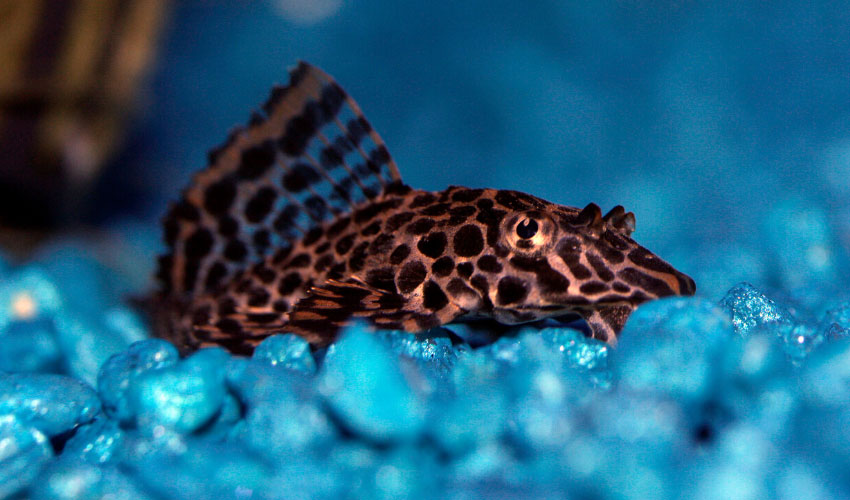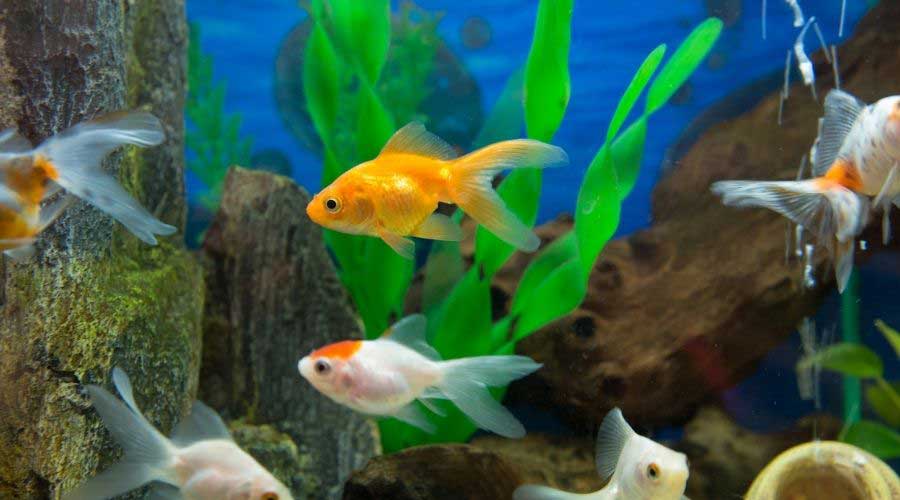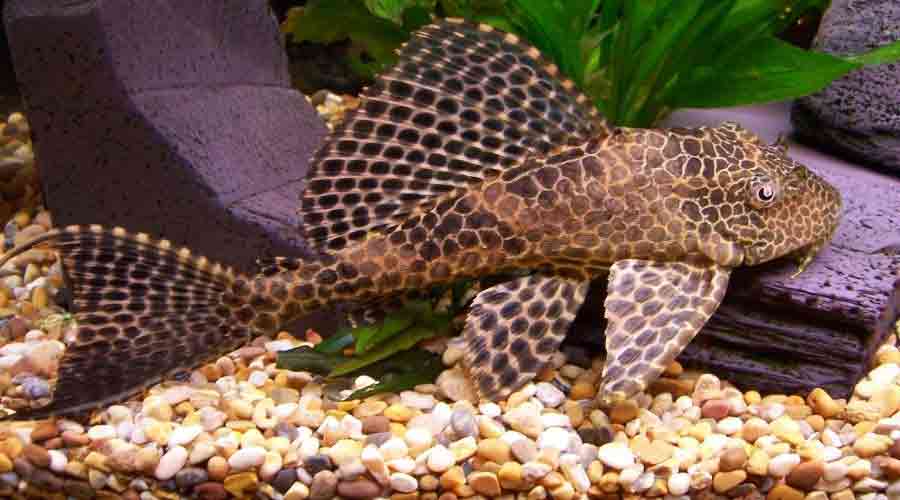One of the easiest fish to care for and one of the most compatible with other fish, the plecostomus, more commonly known as the pleco, is an obvious choice of fish to start off any tank, whether for a beginner starting your first tropical fish tank or an expert fish owner simply setting up your latest aquarium. In this blog, we’ll talk about plecostomus care.
Plecostomus Care: A Great Guide for a Cool Pet

About the Plecostomus
The pleco, also called the suckermouth catfish, is a member of the Loricariidae, or armored catfish, family, the largest family of catfish. Native to the South American Amazon jungle rivers, plecos can grow to be as long as 12 inches or more at full maturity. The common pleco (or Hypostomus plecostomus,) the most popular of all plecos, can grow as long as 24 inches. In most home fish tanks, however, they’ll generally grow to about 15 inches.
Plecos can be brown and/or gray in color, often with sandy-colored patterns or spots. Their nickname of “armored catfish” comes from the big bony plates they have covering their bodies. They are most notably distinguished by a large mouth with suction-like lips that attach to hard surfaces. They feature an elongated body with well-developed fins, including a moon-shaped tail fin, ending in a big head with little eyes positioned high atop it. A membrane covers their eyes, permitting them to regulate how much light exposure their eyes receive.
Primarily nocturnal creatures, plecos spend the vast bulk of their waking time hanging from the sides of the tank, seeming to crawl along the rocks at the bottom or attached by the mouth to some other feature of the tank. The lifespan of plecos depends on the specific species of pleco with an average ranging from 10 to 15 years.
In all, there are some 150 different species of plecos, most of them native to South America. Not all plecos, however, are appropriate for keeping as pets in a tropical fish tank. The most commonly kept species of plecos includes:
- Bristlenose plecos
- Clown plecos
- Gold Nugget plecos
- Royal plecos
- Sailfin plecos
- Snowball plecos
- Zebra plecos
Keeping Plecos
In the wild plecos enjoy fast-flowing rivers and streams that feature a rocky substrate. The best tank environments for plecos, therefore, simulate this environment as closely as possible.
Ideally with plecostomus care, they should be kept in at least a 20-gallon or to 30-gallon fish tank, depending on the species of pleco. The water should be kept at a temperature of 72 to 78 degrees Fahrenheit. To maintain the health of your plecos, be sure to provide adequate filtration. Canister filters are most recommended. Make sure to have a strong pump providing a steady water current.
Be aware, if using an acrylic tank, that large plecos can scratch acrylic. Plecos prefer a slightly acidic pH, which many pleco owners help to maintain in their tanks more easily by adding driftwood. Plecos also tend to like caves and dark areas where they can hide, particularly during the day. Make sure your plecos have at least a couple of dark, secure places to hide out during the day while they sleep.
Proper care of a tank containing one or more plecos includes:
- Daily – Check the water temperature, filter, pump, and other equipment.
- Weekly – Check the water level.
- Semi-monthly/Monthly – Every two to four weeks or as needed, change 10 to 25% of the water volume in the tank.
Feeding Plecos
Plecos are among the easiest fish to feed, as they are algae eaters that can get much of the nourishment they need directly from the algae that grows on the interior glass and rocks, plants, and structures in the fish tank. For this reason, plecos are a common staple of many home fish tanks in order to help keep them clean and cut down on the owners’ cleaning and maintenance duties.
Avid scavengers, they will spend most of their waking time, in fact, eating nearly anything they encounter when they attach their specially-adapted mouths to any hard surface in the tank. What’s more, plecos are omnivores, so they will eat dead and discarded animal matter as well as plant matter.
That said, do not rely on your plecos’ scavenging proclivities to provide for all their nutritional needs. To make sure your plecos remain healthy and strong, make sure to also feed them sinking algae wafers daily, or if possible, nightly, as this is their preferred feeding time. Depending on the species of pleco in your tank, it might also require driftwood in its diet.
Additionally, you can treat your plecos with the occasional raw cucumber or zucchini one or two times each week. Always anchor any raw vegetables you feed your plecos to the floor of the tank.
Lastly, note that, if your tank has live plants, plecos may uproot or eat them. That said, it can be beneficial to plant some live plants in your tank with your plecos regularly precisely to give them some fresh greenery to nibble. Java moss and other fast growers are best, as they can most easily recover and regenerate after eaten back.
Tankmates

When it comes to plecostomus care and tankmates, Plecos are compatible with most other fish for freshwater tanks except other plecos, toward which they can be quite territorial. Therefore, it is generally best to keep only one pleco in any given tank or at least only one of any given species of pleco. Otherwise, however, plecos tend to ignore the other fish in the tank with them, for the most part, and very much keep to themselves.
Anytime you wish to introduce new fish or other creatures into a tank with a pleco, always do so gradually to avoid disturbing the pleco’s habitat.
Pro tip: Avoid keeping blue crayfish and plecos together.
Plecostomus Care: A Recap
For a fish that helps you take care of your tropical tank while you take care of it, there’s nary a better or more popular choice than the pleco. Providing a little nightlife to your tank, not to mention life at the bottom and fringes, the pleco is a perfect complement for almost any configuration.
When picking a pleco for your tank, look for a vigorous eater with clear eyes that remains on the glass or bottom of the tank. Signs of an unhealthy pleco include:
- Cloudy eyes
- Fraying fins
- Fading color
- Fungus or spots on the mouth or body
- Labored breath

